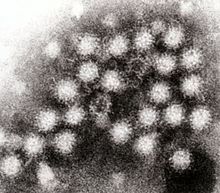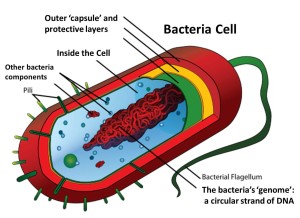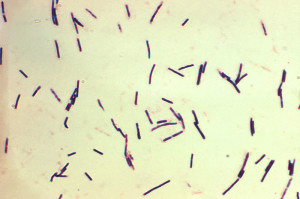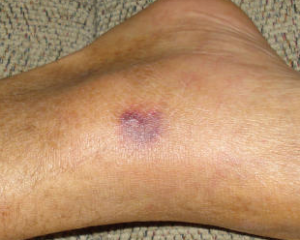The known viruses in the genus are all considered to be the variant strains of a single species called Norwalk virus. The viruses are transmitted by fecally contaminated food or water; by person-to-person contact; and via aerosolization of the virus and subsequent contamination of surfaces. Noroviruses are the most common cause of viral gastroenteritis in humans, and affect people of all ages.
Norovirus infection is characterized by nausea, forceful vomiting, watery diarrhea, and abdominal pain, and in some cases, loss of taste. General lethargy, weakness, muscle aches, headache, coughs, and low-grade fever may occur. The disease is usually self-limiting, and severe illness is rare. The virus affects around 267 million people and causes over 200,000 deaths each year; these deaths are usually in less developed countries and in the very young, elderly and immuno-suppressed.
Norovirus is rapidly inactivated by either sufficient heating or by chlorine-based disinfectants, but the virus is less susceptible to alcohols and detergents, as it does not have a lipid envelope.
Recently, (12/4/2013), Norovirus was inked to Rio and other Hotels in Las Vegas. Based on the results of positive laboratory testing, the Southern Nevada Health District has confirmed the illnesses it is currently investigating among a group of attendees of the National Youth Football Championship event as norovirus.
The health district is stressing the importance of practicing appropriate hygiene to limit the spread of norovirus. People who are sick should stay home from work or school until 72 hours after their symptoms have ended.
Norovirus is a self-limiting illness and symptoms resolve after a few days. The most serious complication can be dehydration, especially in children or older adults. It is important that people who are sick with norovirus, or any other gastrointestinal illness, stay home from work or school and avoid contact with other people.
Noroviruses are transmitted directly from person to person and indirectly via contaminated water and food. They are extremely contagious, and fewer than twenty virus particles can cause an infection (some research suggests as few as five). Transmission occurs through ingesting contaminated food and water and by person-to-person spread. Transmission can be aerosolized when those stricken with the illness vomit, and can be aerosolized by a toilet flush when vomit or diarrhea is present; infection can follow eating food or breathing air near an episode of vomiting, even if cleaned up. The viruses continue to be shed after symptoms have subsided and shedding can still be detected many weeks after infection.
Vomiting, in particular, transmits infection effectively. In one incident, a person who vomited spread infection right across a restaurant, suggesting that many unexplained cases of food poisoning may have their source in vomit. 126 people were dining at six tables in December 1998; one woman vomited. Staff quickly cleaned up, and people continued eating. Three days later others started falling ill; 52 people reported a range of symptoms, from fever and nausea to vomiting and diarrhea. The cause was not immediately identified. Researchers plotted the seating arrangement: more than 90% of the people at the same table as the sick woman later reported becoming ill. There was a direct correlation between the risk of infection of people at other tables and how close they were to the sick woman. More than 70% of the diners at an adjacent table fell ill; at a table on the other side of the restaurant, the rate was still 25%. The outbreak was attributed to a Norwalk-like virus (norovirus). Other cases of transmission by vomit were later identified.



